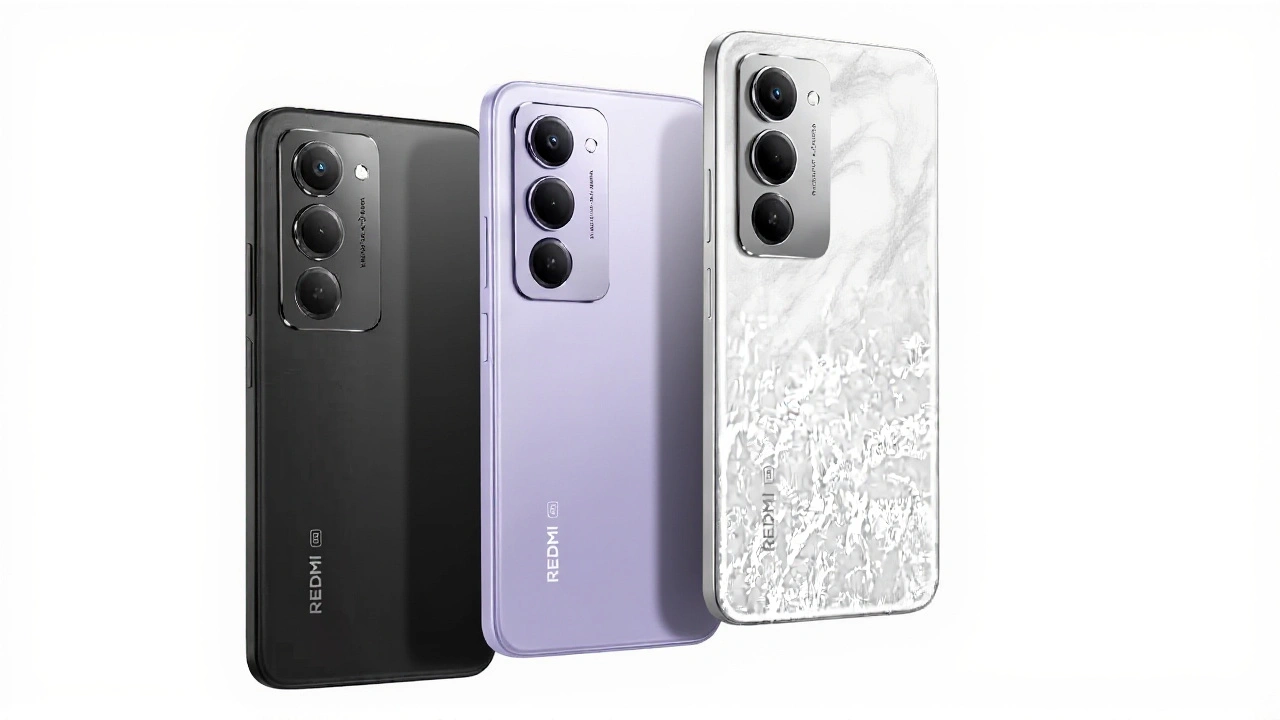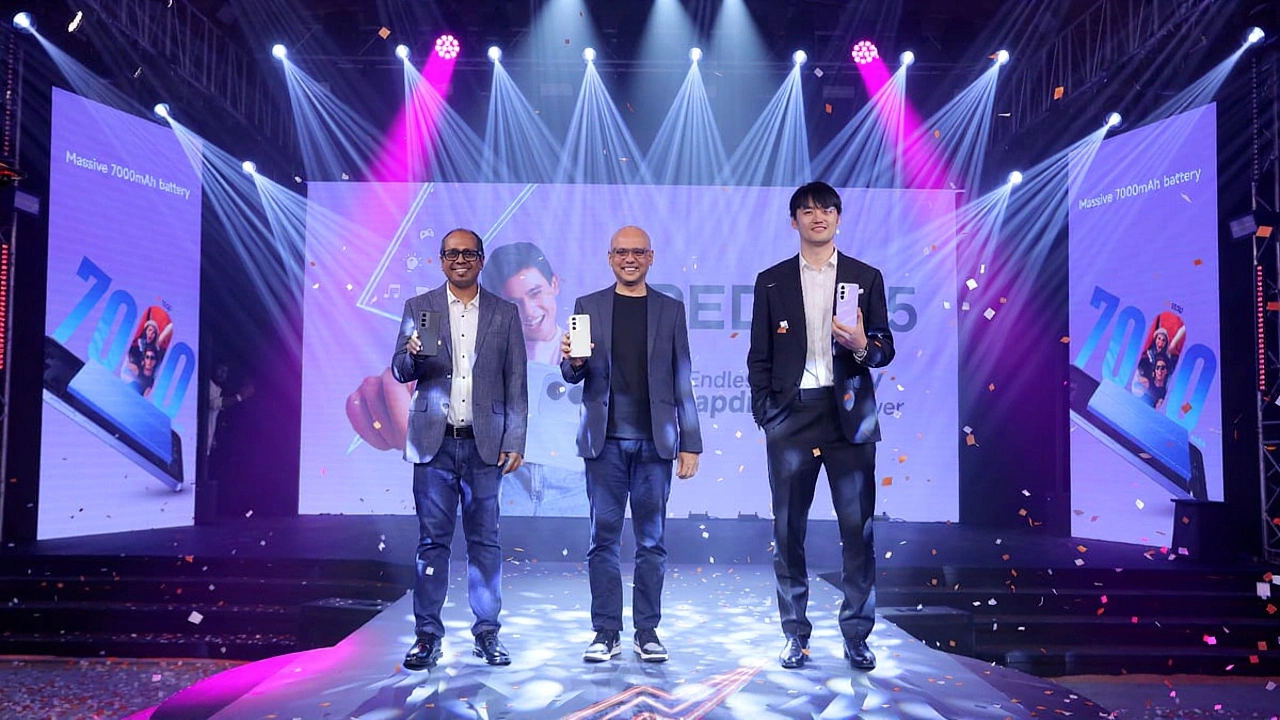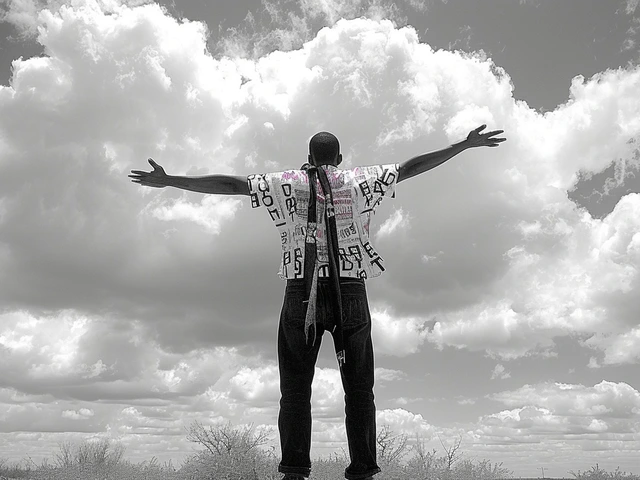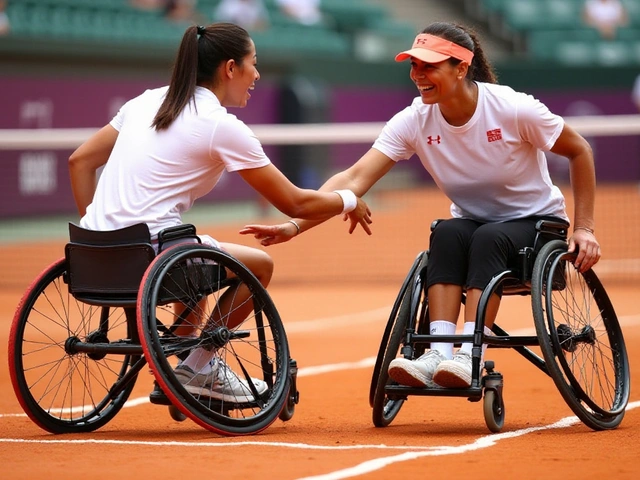When Xiaomi Bangladesh rolled out its REDMI 15 Power NightDhaka International Convention Center in Dhaka on September 25 2025, the city buzzed with tech‑savvy energy. The evening, billed as a showcase of “Endless Battery. Snapdragon Power,” gathered influencers, content creators and a handful of local celebrities under a canopy of neon lights and thumping beats.
Event Overview and Theme
The Power Night opened with a high‑octane introduction by popular host Rafsan Shabab, whose quick‑witted banter set a lively tone. He guided the crowd through a series of immersive stations where attendees could test the phone’s battery endurance by streaming video, gaming on Snapdragon‑powered titles, and even reverse‑charging a friend’s device. The venue’s LED walls displayed kinetic graphics that mimicked the phone’s 7,000 mAh heartbeat, reinforcing the “endless” narrative.
Music punctuated the demos. Energetic performances from Pritom Hasan and the electronic duo Xefer kept the vibe electric, while occasional light shows synced to the beats. The event’s décor – reflective chrome, neon green accents, and a sprawling “Battery” sculpture – gave the impression that the smartphone itself was the star of a futuristic stage show.
Device Specs and Pricing
The centerpiece, the REDMI 15, packs a 7,000 mAh battery, a figure that dwarfs most mid‑range phones on the Bangladeshi market. Xiaomi pairs the capacity with 33 W fast charging and 18 W reverse charging, meaning a half‑hour charge can push the phone past the 80 % mark. Powered by the Snapdragon 7+ Gen 2 chipset, the device promises smooth multitasking and low‑latency gaming, a claim substantiated by on‑site benchmark runs that hovered around 2,400 points in the AnTuTu 9 suite.
Two configurations are available. The base model offers 128 GB of storage with 6 GB RAM and retails for 17,999 BDT. The premium variant ups the ante to 256 GB and 8 GB RAM for 20,999 BDT. Both versions ship with a 48 MP main camera, an 8 MP ultra‑wide lens, and a 2 MP macro sensor – specs that align with Xiaomi’s strategy of delivering high‑value hardware at affordable price points.
During the demo, Wahid of the YouTube channel “Tech to the Point” stressed that “the battery life alone could redraw the value map for Bangladeshi users who spend most of the day on social media and streaming.” The sentiment echoed across the room, with many influencers noting that the phone’s endurance would be a game‑changer for daily commuters.

Influencer and Media Reactions
The guest list read like a who's‑who of Bangladesh’s digital scene. Among them, Salman Mohammad Muqtadir, whose YouTube channel boasts over 5 million subscribers, posted a live reaction that quickly amassed 120,000 likes. He highlighted the seamless hand‑off between fast charging and the device’s adaptive display, saying, “It feels like the phone just keeps up with my pace, not the other way around.”
Another prominent voice, Tasrif Khan, livestreamed a battery‑stress test, running a 4‑hour video loop while gaming. By the end, the battery indicator still hovered above 65 %, a result he described as “pretty impressive for a $200‑plus phone.”
Local tech blog “BanglaTech” published a post‑event write‑up noting that the Power Night succeeded in “bridging the gap between product launch and cultural moment.” The article cited audience surveys showing 78 % of attendees rated the event experience as “excellent” or “outstanding.”
Market Context and Xiaomi’s Strategy
Bangladesh’s smartphone market has been a battleground for Chinese OEMs since 2018, with Samsung and Apple holding premium niches, while brands like Realme and Vivo chase the mid‑range crowd. Xiaomi entered the arena in 2014 and has steadily grown its share, reaching an estimated 22 % by the end of 2024, according to Counterpoint.
The REDMI 15 launch follows the company’s September 18 2025 debut of the Redmi Pad 2A, a tablet aimed at students and remote workers. Analysts interpret the back‑to‑back releases as a “dual‑pronged push” to dominate both the mobile and tablet segments before the holiday season. A spokesperson for Xiaomi Bangladesh — who requested anonymity — told us, “We see a rising demand for devices that can last a full workday without hunting for a charger. The REDMI 15 directly answers that call while staying competitively priced.”
Competition is fierce. Realme’s upcoming “Narzo 70” claims a 6,500 mAh battery, while Samsung’s Galaxy A54 offers a 5,000 mAh pack. Yet Xiaomi’s emphasis on Snapdragon processing power, combined with aggressive pricing, could tip the scales in major retail chains like “Robi Shop” and “Star Tech.”

What’s Next for Xiaomi in Bangladesh?
Looking ahead, Xiaomi plans to roll out a network of “Mi Experience Stores” across the country’s major cities, with a flagship outlet slated for Chittagong in early 2026. The company also hinted at a forthcoming “Mi AI” integration that would leverage the Snapdragon platform for on‑device voice assistants, a feature that could further differentiate the REDMI 15 from rivals.
For consumers, the takeaway is clear: a phone that promises to stay charged through a day of videos, games and social media, without demanding a premium price tag. Whether the device lives up to the hype will be measured in real‑world usage, but the enthusiasm at the Power Night suggests Xiaomi has struck a chord with Bangladesh’s youthful, tech‑hungry audience.
Frequently Asked Questions
How does the REDMI 15 battery compare to other phones in Bangladesh?
At 7,000 mAh, the REDMI 15 tops most mid‑range competitors, which typically sit between 4,500 mAh and 6,000 mAh. In real‑world tests, it held above 65 % after four hours of continuous video streaming and gaming, far outlasting rivals like the Realme Narzo 70 (6,500 mAh) and Samsung Galaxy A54 (5,000 mAh).
What price options are available for Bangladeshi buyers?
The REDMI 15 comes in two trims: 128 GB/6 GB RAM for 17,999 BDT and 256 GB/8 GB RAM for 20,999 BDT. Both models include the same 7,000 mAh battery and Snapdragon 7+ Gen 2 processor, offering a clear value proposition for budget‑conscious consumers.
When and where can I buy the REDMI 15?
The phone hit stores across Bangladesh on September 25 2025, right after the Power Night. It’s available at major retailers like Robi Shop, Star Tech, and authorized Xiaomi outlets, as well as through online platforms such as Daraz and Pickaboo.
Will Xiaomi release software updates for the REDMI 15?
Xiaomi has committed to two major Android version upgrades and three years of security patches for the REDMI 15, aligning with its global policy for Redmi devices released in 2025.
How does the REDMI 15 fit into Xiaomi’s broader Bangladesh strategy?
The launch follows the September 18 tablet debut and precedes a network of new Mi Experience Stores. By offering a high‑capacity battery at a mid‑range price, Xiaomi aims to cement its position as the go‑to brand for young, mobile‑first users in a rapidly expanding market.







Jauregui Genoveva October 7, 2025
Honestly, the whole REDMI 15 Power Night felt like a tech‑festival meets a rave, and I was there for the neon and the battery demos. The neon green accents were literally glowing, making the whole place feel like a sci‑fi set. I could actually see the 7,000 mAh battery graphic pulse in time with the beats, which was kinda cool. The host, Rafsan, kept the vibe alive with quick jokes, and the crowd seemed genuinely pumped. I think the biggest win was letting us actually reverse‑charge a friend's phone on the spot – it made the specs feel real. The whole event just screamed “we care about endurance” and it showed. 😎
Overall, a solid night for anyone who lives on their phone all day.
Quinten Squires October 10, 2025
Look I’m not trying to sound like a walking brochure but the Snapdragon 7+ Gen 2 really does make the phone feel buttery. I ran a couple of games on the demo stations and the frame drops were barely noticeable. Even the streaming demo kept 1080p at 60fps, which is impressive for a mid‑range price. The fast‑charging was another highlight – getting to 80% in half an hour is pretty much a necessity these days. Honestly, I think the price point under 21k BDT makes it a compelling alternative to Realme’s upcoming Narzo 70. The whole event just reinforced that Xiaomi knows the market here.
Tyler Manning October 13, 2025
When I first walked into the venue my mind was focused on the usual marketing fluff that surrounds smartphone launches, yet the experience forced a reevaluation of the industry’s trajectory in emerging markets. The scale of the battery demonstration, where attendees could simultaneously stream 4K video, engage in cloud gaming, and still retain a comfortable charge margin, highlighted a shift from incremental improvements to a paradigm shift emphasizing endurance as a primary competitive axis. It is evident that manufacturers have recognized the “on‑the‑go” lifestyle of Bangladeshi youth, for whom unreliable power infrastructure remains a real pain point. By integrating reverse‑charging capabilities, Xiaomi not only showcases engineering prowess but also directly addresses community needs, fostering a sense of empowerment among consumers who previously relied on external power banks. The inclusion of the Snapdragon 7+ Gen 2 chipset further indicates an alignment with performance expectations that were historically reserved for premium segments, thereby democratizing high‑end processing power. Moreover, the pricing strategy-setting the 128 GB/6 GB model at 17,999 BDT and the 256 GB/8 GB variant at just 20,999 BDT-demonstrates a calculated approach to market penetration, positioning the REDMI 15 as a disruptor against competitors like Realme and Samsung. The comprehensive approach, from hardware specs to pricing, suggests a nuanced understanding of local purchasing power and consumer behavior. The event’s ambience, with its neon aesthetic and kinetic LED displays, reinforced the narrative of a futuristic, battery‑centric device, making the technical specifications feel tangible to the average attendee. The live streaming by Salman Mohammad Muqtadir, whose audience surpassed a hundred thousand likes, amplified the event’s reach and cemented the REDMI 15’s reputation in the digital sphere. In summary, the Power Night was not merely a product reveal but a strategic statement: endurance and performance can be delivered at an accessible price, reshaping the expectations of mid‑range smartphones in Bangladesh.
james patel October 16, 2025
From a technical standpoint, the integration of 33 W fast‑charging alongside the 7,000 mAh battery represents a significant engineering balance. The thermal management during rapid charge cycles appears to be well‑optimized, as no overheating was observed during the live demo. Additionally, the 48 MP sensor paired with the 8 MP ultra‑wide lens provides a versatile photography suite for the price tier. The device’s adaptive display, which automatically adjusts refresh rates, contributes to both power efficiency and user experience.
Scarlett Mirage October 19, 2025
Okay, let’s get real: the hype around “endless battery” often feels like marketing fluff, yet the live stress test proved otherwise. Watching Tasrif Khan’s 4‑hour video loop while gaming and still seeing above 65 % was genuinely impressive. The fact that this is achievable on a sub‑$200 device is a game‑changer. Moreover, the price point makes it accessible to students and workers who can’t afford premium flagships. If you’re still on the fence, consider the long‑term savings on not needing a power bank or spare charger.
Ian Sepp October 22, 2025
While the event certainly had a strong entertainment component, the strategic implications for Xiaomi’s market share in Bangladesh are noteworthy. The timing of the launch, just days after the Redmi Pad 2A, suggests a coordinated effort to dominate both smartphone and tablet segments ahead of the holiday shopping season. This multi‑product approach could solidify Xiaomi’s position against rivals like Realme and Samsung.
Lois Parker October 25, 2025
Honestly, I think the whole thing was a bit over‑the‑top. Lots of neon lights and hype, but at the end of the day a phone is a phone. The battery is big, sure, but you still need a decent charger and good network. I’d rather see more focus on software stability than flashy events.
Lerato Mamaila October 28, 2025
It’s wonderful to see such vibrant tech events in Bangladesh, celebrating local culture while introducing global innovations. The blend of music, light, and technology really showcases a dynamic spirit. I hope future launches continue to involve community art and local talent, bridging technology with cultural expression.
Dennis Lohmann October 31, 2025
Looks solid.
Jensen Santillan November 3, 2025
The REDMI 15 seems to be positioned as the “budget king of endurance,” but let’s dissect the pricing and specs. A 7,000 mAh battery is undeniably massive for this bracket, yet the Snapdragon 7+ Gen 2, while competent, does not outperform the MediaTek Dimensity line in raw CPU benchmarks at similar price points. The 33 W fast charger is decent, but competitors are already offering 45 W or higher in the same price range.
Mike Laidman November 5, 2025
Sure, Xiaomi’s battery is big, but the overall build quality feels a bit cheap compared to Samsung’s A‑series. The plastic back isn’t the most premium feel, and the camera performance, especially low‑light, lags behind. It’s a decent option if you’re on a strict budget, but don’t expect flagship‑level experiences.
J T November 8, 2025
Yo, this phone’s got that charger game on lock – hit 80% in thirty minutes, that’s fire. Battery lasts all day even when you’re binge‑watching TikToks and gaming on the side. Price is legit, so it’s a win‑win for anyone who’s broke but still wants decent specs.
A Lina November 11, 2025
From a technical perspective, the integration of reverse‑charging is an interesting value‑add, yet the actual utility may be limited for users who already possess dedicated power banks. Furthermore, while the Snapdragon 7+ Gen 2 offers respectable performance, it does not eclipse the efficiency of some competing MediaTek solutions at similar price points. In terms of software support, Xiaomi’s commitment to two major Android upgrades is commendable but falls short of the industry’s emerging three‑year update standards.
Virginia Balseiro November 14, 2025
Wow, what a night! The energy in Dhaka was electric-literally! 🎉 From the booming beats to the glowing neon, every detail felt like a celebration of tech culture. The battery demo was the real show‑stopper; seeing phones stay alive after hours of streaming was mind‑blowing. I’m pumped to grab one of these REDMI 15s and test it out on my own commutes. Let’s go!
Jared Mulconry November 17, 2025
It’s great to see such enthusiasm around the launch. While the specs are impressive, I think it’s also important to consider long‑term software updates and after‑sales support. Hopefully Xiaomi continues to deliver on its promises for the Bangladeshi market.
Brandon Rosso November 20, 2025
Congratulations to Xiaomi Bangladesh for orchestrating an event that not only showcased hardware but also engaged the community. The strategic timing ahead of the holiday season positions the REDMI 15 to capture significant market share, especially among price‑sensitive consumers seeking reliable battery life. I look forward to observing how this translates into sales figures and brand loyalty in the coming months.
Tracee Dunblazier November 23, 2025
I appreciate the thorough coverage of the launch, though I remain cautiously optimistic. The battery specs are compelling, but real‑world performance over time will be the true test. Let’s see how the device holds up after several firmware updates.
Edward Garza November 26, 2025
The REDMI 15 appears to be a solid addition to the mid‑range market, offering a large battery and decent performance at a competitive price. However, consumer perception will ultimately depend on durability and software experience over the device’s lifecycle.